#Odometer Correcting
Explore tagged Tumblr posts
Text
Odometer Correcting: A Comprehensive Guide
Introduction
In the automotive industry, odometer accuracy is vital for transparency and fairness in vehicle transactions. Odometer correcting, although controversial, is a practice aimed at ensuring accurate mileage readings. In this guide, we delve into the intricacies of odometer correcting, exploring its methods, legal implications, and importance.
Understanding Odometer Correcting
What is Odometer Correcting?
Odometer correcting, also known as mileage adjustment, involves altering the displayed mileage on a vehicle's odometer. While it can be done for legitimate reasons, such as correcting recording errors, it is often associated with fraudulent activities aimed at inflating a vehicle's value.
Legal Implications of Odometer Tampering
Engaging in odometer tampering, including odometer correcting with deceptive intent, is illegal in most jurisdictions. It is considered fraud and can lead to severe penalties, including fines and imprisonment. Sellers must disclose accurate mileage information to buyers to avoid legal repercussions.
Methods of Odometer Correcting
Mechanical Odometer Adjustment
In older vehicles with mechanical odometers, adjustment involves physically altering the internal mechanisms to reflect a lower mileage. However, advancements in digital odometers have made this method less prevalent and more easily detectable.
Digital Odometer Rollback
Digital odometer rollback is a more sophisticated method that involves altering the electronic data stored in the vehicle's onboard computer system. Specialized tools and software are used to manipulate the mileage readings, posing significant challenges for detection.
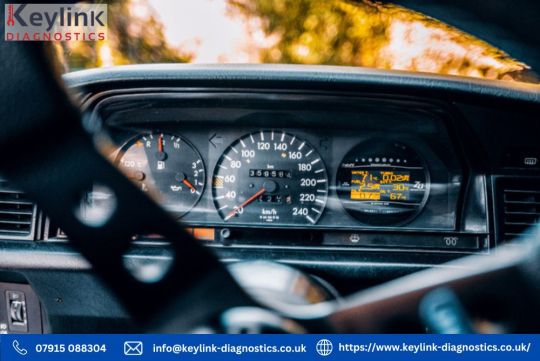
Importance of Odometer Accuracy
Fair Market Value
Accurate odometer readings are crucial for determining a vehicle's fair market value. Buyers rely on mileage data to assess a vehicle's condition, usage patterns, and potential maintenance needs accurately.
Regulatory Compliance
Regulatory bodies enforce strict guidelines to prevent odometer fraud and protect consumers from deceptive practices. Sellers must comply with disclosure requirements and ensure odometer accuracy to maintain trust and integrity in the automotive marketplace.
Conclusion
Odometer correcting is a contentious issue with significant legal and ethical implications. While it may seem tempting to adjust mileage for personal gain, the consequences far outweigh any potential benefits. By adhering to legal requirements and promoting transparency, stakeholders can uphold the integrity of odometer readings and ensure fair transactions in the automotive industry.
Get In Touch!
Phone: 07915 088304 Mail: [email protected]
0 notes
Text
Digiprog 3 V4.94 Auto Car Mileage Correction Odometer Adjustment Diagnostic Tool
https://www.ebay.com/itm/127043405726
0 notes
Text
What does the odometer tell you and how much mileage is too high for a car in 2024?

An odometer is an instrument in your car’s dashboard that contains useful information. It shows the total distance covered by an automobile. The odometer’s primary purpose is to display mileage, but it is not its only function. You can use the data from the odometer in various ways and significantly improve the car’s maintenance and safety.
Mechanical Odometer
Odometers come in two types: mechanical and digital. Let’s start with the mechanical odometer. Mechanical odometers are common in older automobiles. They are made up of gears, and their functionality depends on the gears that spin when a car begins to move. All the gears are linked, and moving one causes the others to revolve as well. When a car is in motion, the gears turn, changing the numbers on the odometer.
Mechanical odometers have been used to measure mileage in cars. However, this technology is not precise. As a result, current automobiles no longer rely on mechanical odometers and have adopted a more modern solution: digital odometers.
Digital Odometer
A digital odometer, also known as an electronic odometer, is an electronic device used in modern vehicles to measure and display the distance traveled. It uses sensors that detect the rotation of the wheels and send data to the computer. Each pulse represents a precise unit of distance, and the computer adds these pulses to provide an accurate reading.
For example, if you drive a car with a digital odometer from your house to the grocery store 10 miles away, the odometer will count the pulses caused by the wheel rotations and show “10 miles” on the dashboard. This enables drivers to keep track of their vehicle’s mileage for maintenance schedules and fuel efficiency monitoring.
Why is an odometer important?
An odometer is an essential part of a vehicle for several reasons. Its correct functioning influences maintenance, safety, and financial aspects. Still, why is the odometer important?
Maintenance Scheduling: It allows you to track mileage and plan routine maintenance, such as oil changes, tire rotations, and inspections. Hence, you can be sure that the vehicle operates smoothly and safely.
Fuel economy: By measuring mileage, you can measure fuel economy over time. If you notice a rapid change in miles per gallon, this might indicate issues that need to be addressed.
Resale value: The numbers on the odometer have always influenced buyers’ final choices. Lower mileage often indicates less wear and tear, making the car more appealing. Consequently, people usually prefer to purchase a car with lower miles and make a decision based on this information.
Declarations: Accurate mileage records are required for official documents such as leasing agreements, insurance purposes, and tax deductions.

What are the applications of odometers?
Odometers have been in use since ancient Rome, according to historical records. Inventor Vitruvius developed an instrument attached to chariots that dropped a pebble into a box for every mile driven. Today’s digital odometers are significantly more precise and reliable than earlier innovations. Nowadays, odometers have several applications:
Mileage Tracking: Odometers record the total distance driven by a vehicle. They track all the miles and show the information on the dashboard.
Maintenance Monitoring: An automobile’s odometer tracks overall mileage, which is crucial for monitoring wear and tear and scheduling routine maintenance.
Leasing Agreements: Odometers may assist you in monitoring mileage restrictions in leasing agreements. ensuring that drivers don’t exceed the permitted distance, which may result in extra fees.
Warranty Claims: Repairs are usually covered up to certain mileage. Hence, it’s crucial to know the exact distance that your vehicle has traveled.
Insurance Rates: Some insurance firms provide plans that determine rates depending on the distance driven using odometer readings.
Rental Car Monitoring: Rental car businesses use odometers to monitor usage and ensure vehicles are returned within agreed-upon mileage limitations. This allows them to control overall wear and tear.
Route Optimization: Logistic organizations monitor odometer data to assess and improve delivery routes, therefore lowering fuel costs and increasing efficiency.
Ride-sharing Services: To guarantee safety and dependability, ride-sharing companies such as Uber monitor the usage and maintenance requirements of their drivers’ vehicles using odometer readings.
What does the odometer tell you?
An odometer reading shows the total mileage driven by a vehicle. The odometer records all the miles the car travels and displays them on the dashboard. As a result, the odometer is constantly changing, and the number of miles indicated increases.
An odometer tells you how far the vehicle has gone since it was first used. For example, if a car’s odometer displays 100,000 miles, it means the vehicle has covered 100k miles since it was first placed into service. Understanding a vehicle’s usage history is essential for determining its general condition and any future maintenance requirements.
How to calculate mileage and mile per gallon (MPG) using an odometer?
Calculating miles using an odometer is simple and requires only a few steps:
Step 1. Note the Starting Odometer Reading
Take the odometer reading at the start of your trip or the period for which you wish to calculate miles. This will indicate the beginning of your adventure.
Step 2. Record the Ending Odometer Reading
At the end of your trip or at the specified interval, write down the odometer reading (record what the odometer shows at your final destination). This value represents the overall distance traveled during that time.
Step 3: Find the traveled distance
To find the distance covered, subtract the starting and ending odometer readings. The result is the total distance traveled in miles.
Step 4: Calculate the MPG
To calculate the MPG (miles per gallon), use the formula MPG = Total Distance Traveled / the amount of fuel consumed during that period. For example, if you traveled 400 miles and used 10 gallons of fuel, your MPG would be 400 miles / 10 gallons = 40 miles per gallon (MPG).
What is a good odometer reading for a car in 2024?
In 2024, determining a decent odometer reading for a car is dependent on a number of criteria. The most important of them are the vehicle’s age and maintenance history. In general, for new automobiles (less than 5 years old), a good odometer reading is less than 50,000 miles. This suggests little usage and maybe less wear and tear on the engine and other components.
For older automobiles (5-10 years), an odometer reading of 80,000 to 100,000 miles is regarded as fair, provided routine maintenance has been conducted. Beyond 10 years, a decent odometer reading might vary greatly depending on how well the vehicle has been maintained and used. Higher mileage vehicles can still be dependable if properly maintained, although purchasers may prefer odometer readings under 150,000 miles for older cars to ensure lifespan and fewer possible repair bills in the near future.
Good mileage in 2024 depends on various circumstances. However, the odometer showing between 10,000 and 12,000 miles is considered acceptable in 2024.
Is 100k miles too much for a car?
Although 100,000 miles is not high in modern cars, years ago, it was a watershed amount in vehicle valuations. If you drove a car for more than 100,000 miles, it was considered old or defective. However, this approach has changed radically, and technological progress has made a big contribution to this. Cars today are built to last 100,000 or even 200,000 miles without a problem.
The manufacturer, model, and history of maintenance all significantly impact the automobile. Modern vehicles may easily exceed 100,000 miles. Routine maintenance, periodic oil changes, and minor repairs may also dramatically increase a vehicle’s lifespan. Additionally, the style of driving and terrain are important.
For example, driving on a highway is frequently less damaging than driving in a city. Also, if you drove your car in rough terrain or on broken roads, it would harm its overall condition. But that is not all. Bad driving habits will substantially damage your vehicle. In such cases, driving correctly 100,000 miles on a freeway is far superior to having 50,000 odometer marks but the automobile was driven on difficult terrain and with poor driving habits.
Top 20 cars with mileage in 2024
Here is the list of the top 20 cars with MPG in 2024:
Toyota Prius
Hyundai Elantra Hybrid Blue
Kia Niro LX
Toyota Camry Hybrid LE
Hyundai Sonata Hybrid Blue
Toyota Corolla Hybrid
Honda Accord Hybrid
Kia Niro EX & SX
Toyota Camry Hybrid SE/XLE/XSE
Kia Niro PHEV
Toyota Prius Prime
Hyundai Elantra Hybrid Limited
Hyundai Ioniq Hybrid
Honda Insight
Ford Escape Hybrid
Toyota Avalon Hybrid
Chevrolet Malibu Hybrid
Lexus ES 300h
Toyota RAV4 Hybrid
Toyota Venza

Technological innovations in odometers
Technological advancements in odometers have significantly improved their accuracy and functionality.
Early mechanical odometers used gears and cables, which were prone to failure.
Electronic odometers use digital sensors and microprocessors for more accurate and reliable readings.
GPS-based odometers: Use satellite data to improve accuracy. Integration with Vehicle Diagnostics: Real-time monitoring and data collecting enable better maintenance scheduling and vehicle economy.
Blockchain Technology: provides safe and tamper-proof mileage data, minimizing odometer fraud.
What is a mileage blocker?
A mileage blocker is a modern, compact device that stops a car’s mileage record while driving. Hence, even while driving, your automobile won’t count new mileage. The mileage blocker is a special device as it doesn’t delete or remove any previously recorded distance. The SKF mileage blocker is distinguished by its untraceable performance. It prevents the system from storing mileage information in control units. Hence, no device or scanner tool can find an automobile’s actual mileage. It’s essential to remember that the blocker is created for car testing purposes and shouldn’t be used unethically. In addition, this highly efficient tool has installation guidelines, and you can install it yourself. It is available online and you can purchase the mileage blocker from the SuperKilometerFilter website. For any additional information, please visit the support page or reach the customer service department.
Takeaway
An odometer shows the total mileage a vehicle has covered throughout its lifespan and displays this information on the dashboard. The data is important for a variety of reasons, and if used appropriately, it may benefit car owners.
0 notes
Text
How to Use and Update OBDSTAR X300M
After reading this article, locksmiths can learn how to use OBDSTAR X300M odometer adjustment tool and update its software.
1. How to use OBDSTAR X300M for Odometer correction:
a) Establish a connection between OBDSTAR X300M and your vehicle through OBD2 socket.
b) Navigate to VEHICLES >> MILEAGE ADJUSTMENT.
c) Choose your car model and wait for initialization and authorization.
d) Select your specific car model and year for mileage adjustment.
e) The screen will show “communication.”
f) Provide a filename for saving.
g) OBDSTAR X300M reads current mileage successfully.
h) Enter new mileage.
i) The tool will proceed with mileage correction, then indicating “adjustment complete.”
2. How to Perform Software Update on OBDSTAR X300M:
Procedure 1. Download the update tool software from the official website www.obdstar.com before updating OBDSTAR X300M Software.
Procedure 2. Install the software for updating tool.
Click “Next” > “Next” > “Next” > “Finish.”
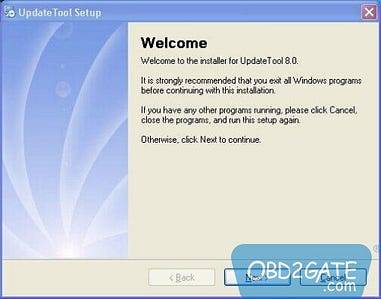
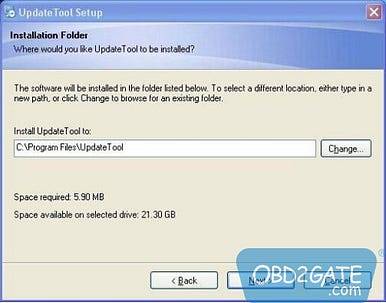
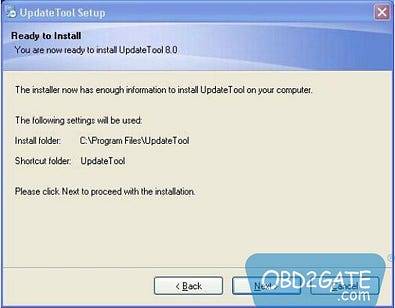
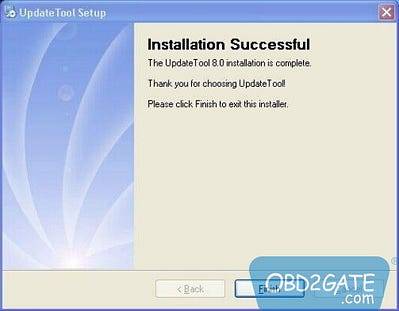
Updating OBDSTAR X300M Software:
Open the software and click the source menu.
Select your target program for update, check the boxes, and press “Update.”
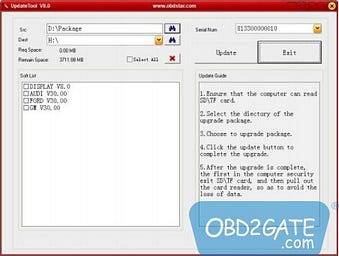


OBDSTAR X300M odometer correction tool user manual download
No password
0 notes
Text
How to Use and Update OBDSTAR X300M
After reading this article, locksmiths can learn how to use OBDSTAR X300M odometer adjustment tool and update its software.
1. How to use OBDSTAR X300M for Odometer correction:
a) Establish a connection between OBDSTAR X300M and your vehicle through OBD2 socket.
b) Navigate to VEHICLES >> MILEAGE ADJUSTMENT.
c) Choose your car model and wait for initialization and authorization.
d) Select your specific car model and year for mileage adjustment.
e) The screen will show “communication.”
f) Provide a filename for saving.
g) OBDSTAR X300M reads current mileage successfully.
h) Enter new mileage.
i) The tool will proceed with mileage correction, then indicating “adjustment complete.”
2. How to Perform Software Update on OBDSTAR X300M:
Procedure 1. Download the update tool software from the official website www.obdstar.com before updating OBDSTAR X300M Software.
Procedure 2. Install the software for updating tool.
Click “Next” > “Next” > “Next” > “Finish.”
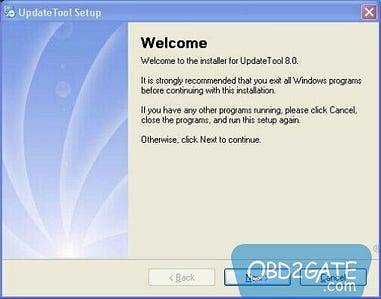
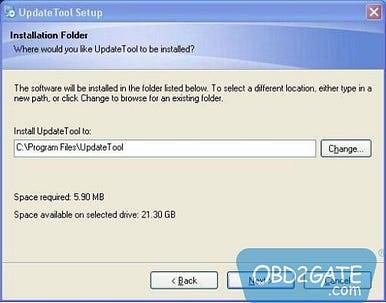


Updating OBDSTAR X300M Software:
Open the software and click the source menu.
Select your target program for update, check the boxes, and press “Update.”
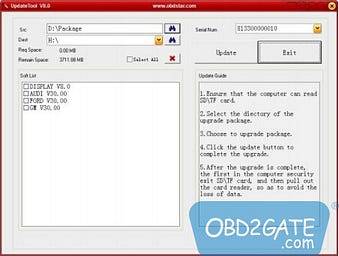


OBDSTAR X300M odometer correction tool user manual download
No password
0 notes
Text
1962 Plymouth Savoy Max Wedge: Unleashing the Power of Muscle
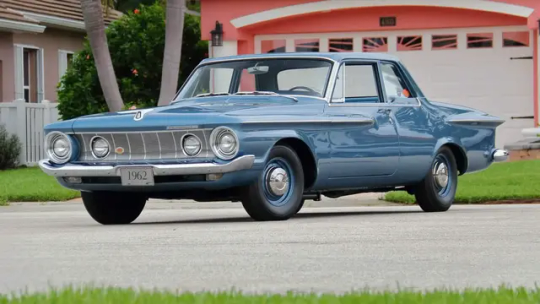
1962 Plymouth Savoy Max Wedge
In 1962, a new era of muscle cars emerged, radiating brilliance and power. Chrysler led the way with their groundbreaking Max Wedge lineup, introducing the world to the fusion of unitized-body construction and the high-performance ram-tuned dual-carbureted 413 CI engine. Among these legends was the Plymouth Savoy Max Wedge, a remarkable vehicle that holds a significant place in automotive history.
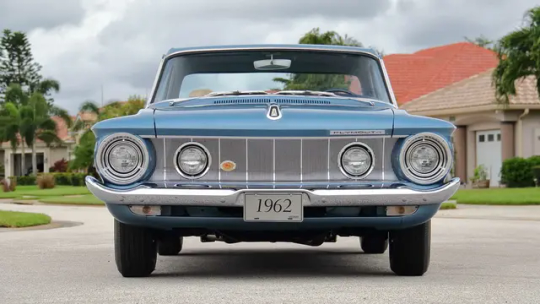
1962 Plymouth Savoy Max Wedge
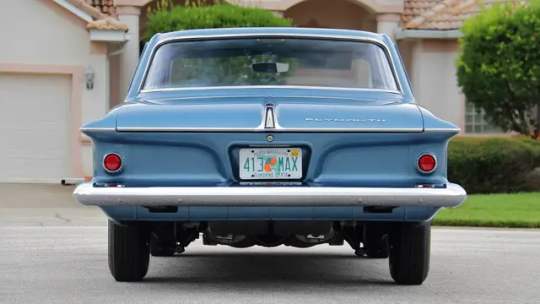
1962 Plymouth Savoy Max Wedge
The First Super Stock Max Wedge with Manual Transmission According to the esteemed Chrysler Registry and the meticulous documentation by Darrell Davis, this specific Plymouth Savoy Max Wedge holds a groundbreaking distinction—it was the first Super Stock model equipped with a manual transmission. The car’s odometer displays a mere 6,593 miles and has undergone a meticulous restoration process to return it to its original specifications. Notably, the engine has been upgraded, boasting a dyno-proven power output exceeding 500 HP.
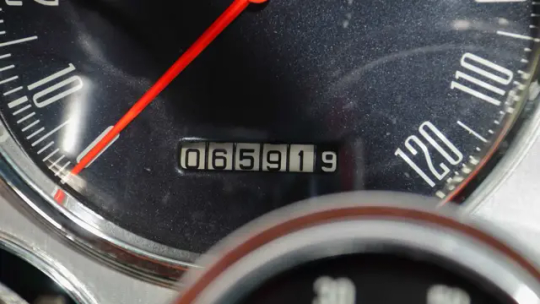
1962 Plymouth Savoy Max Wedge
Unleashing the Power of the 413 CI V-8 Engine The 1962 Plymouth Savoy Max Wedge was powered by the formidable 413 CI V-8 engine. This was the first iteration of Chrysler’s renowned ram induction system, featuring a cross-ram intake manifold meticulously designed to optimize engine efficiency. The engine’s performance was further enhanced by the utilization of cast-iron header-style manifolds, which were rarely preserved but featured in this exceptional vehicle. Dale Reed of California refreshed the engine around 300 miles ago, ensuring its optimal performance. The correct Carter AFB carburetors reside beneath dual black air cleaners, accentuated by carefully placed decals.
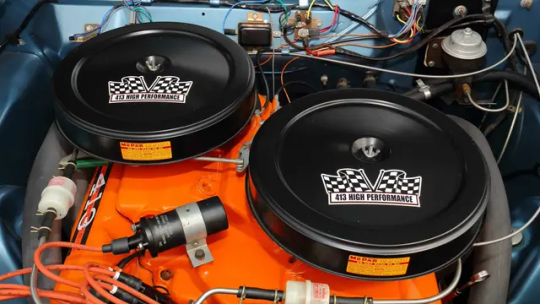
1962 Plymouth Savoy Max Wedge
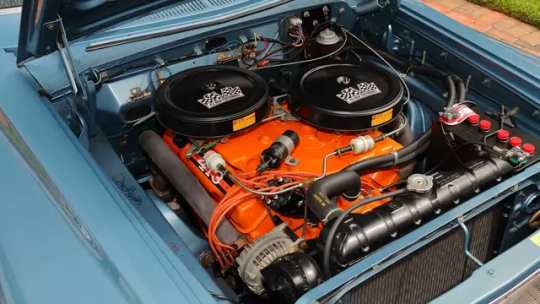
1962 Plymouth Savoy Max Wedge
A Unique Manual Transmission Experience One of the distinctive aspects of this Plymouth Savoy Max Wedge is its manual transmission. Unlike its automatic counterparts, this car delivers a unique driving experience through its floor-mounted shifter, allowing the driver to truly feel the power at their fingertips. Paired with a full aftermarket exhaust equipped with cutouts and the robust 8 ¾ Chrysler differential, this Max Wedge offers an exhilarating ride for those who crave the thrill of the open road.
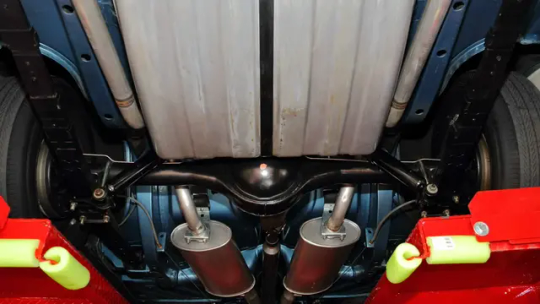
1962 Plymouth Savoy Max Wedge
Captivating Style and Authenticity The exterior of this Plymouth Savoy Max Wedge embodies the spirit of the era. Finished in captivating light blue paint, it exudes a timeless charm. The interior features a complementary blue cloth-and-vinyl combination, while the white-and-blue two-tone trim adds an elegant touch. The front and rear bench seats provide comfort, and the radio delete plate pays homage to the car’s performance-focused nature. Notably, it features a knee-knocker S-W column-mounted tachometer and a beautifully presented trio of rubber pedals. The car’s attention to detail is evident throughout, with the inclusion of circa-1962 chrome fonts, single-lens tail lamps, and OEM steel wheels adorned with poverty-type hubcaps.
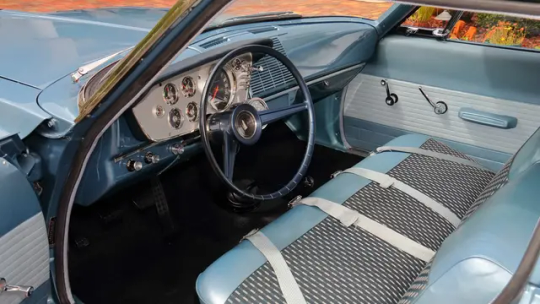
1962 Plymouth Savoy Max Wedge
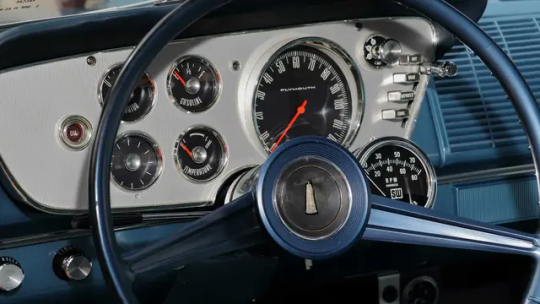
1962 Plymouth Savoy Max Wedge
Provenance and Documentation Accompanying this Plymouth Savoy Max Wedge is a wealth of provenance and documentation that adds to its allure. It includes the original OEM IBM punch card and build sheet, which serve as a testament to its authenticity. Additionally, the window sticker provides insight into its original specifications, while the dyno sheet confirms its impressive horsepower rating. Vintage photos capture the car’s early years when it was part of a famous drag car collection, showcasing its illustrious past.

1962 Plymouth Savoy Max Wedge

1962 Plymouth Savoy Max Wedge
Conclusion The 1962 Plymouth Savoy Max Wedge stands as a testament to the golden age of muscle cars. With its groundbreaking manual transmission configuration, powerful 413 CI V-8 engine, and captivating style, it represents the pinnacle of Mopar’s storied performance heritage. Meticulously restored to its original glory, this Max Wedge allows enthusiasts to experience a bygone era’s raw power and timeless charm.
FAQs: How many miles does the 1962 Plymouth Savoy Max Wedge have? The odometer of the 1962 Plymouth Savoy Max Wedge reads 6,593 miles. Who documented the Chrysler Registry for this particular car? The meticulous documentation of the Chrysler Registry for this car was done by Darrell Davis. Has the engine of the 1962 Plymouth Savoy Max Wedge been upgraded? Yes, the engine of this Plymouth Savoy Max Wedge has been upgraded to a dyno-proven 500-plus HP. What is the significance of the 413 CI V-8 engine in this car? The 413 CI V-8 engine in this car was the first to receive Chrysler’s shortened version of ram induction, known as the cross-ram intake. It maximizes engine efficiency and pairs it with rarely preserved cast-iron header-style manifolds. What documentation and provenance come with this Plymouth Savoy Max Wedge? This Plymouth Savoy Max Wedge comes with various documentation, including the OEM IBM punch card, build sheet, window sticker, dyno sheet confirming horsepower rating, and vintage photos of its early years as part of a famous drag car collection.
#Plymouth Savoy Max Wedge#Plymouth Savoy#plymouth#Max Wedge#car#cars#muscle car#american muscle#mopar#moparperformance#moparnation#moparworld
95 notes
·
View notes
Text
Ultimate Solution for Instrument Cluster Repairs & Replacement

When it comes to your vehicle’s performance, few components are as essential as the instrument cluster. Whether you're monitoring speed, fuel levels, or engine status, a reliable cluster is vital for safe and efficient driving. At Dashboard Instrument Cluster, we specialize in everything from buying instrument clusters online to custom car gauge clusters, repairs, odometer conversions, and more. With over 50,000+ products in stock and physical locations in both the USA and Canada, we are your one-stop destination for anything related to instrument clusters.
1) Buy Instrument Clusters Online With Confidence
Looking to buy instrument clusters online without the hassle? We make the process easy and efficient. Our website, dashboardinstrumentcluster.com, offers an extensive inventory with fast, secure shipping across the world. No matter your car’s make or model classic, modern, or commercial we have you covered. With 50,000+ units ready to ship, you’ll find exactly what you need, backed by expert support.
2) Custom Order Instrument Clusters
Dashboard Instrument Cluster is your trusted source for custom solutions. Can’t find your specific make or model? No problem we either have it in our warehouse or we’ll get it for you.
Our custom instrument cluster service goes beyond just cars. Whether it’s for RVs, tractors, Seadoo, jet skis, ATVs, boats, or other vehicles, we build personalized clusters tailored exactly to your needs. Choose your display style, colors, units (KM/MPH), and more if you can imagine it, we can build it.
Whether you're restoring a classic, upgrading performance, or outfitting specialty vehicles, our expert technicians deliver the perfect fit every time.
3) Instrument Cluster Repair & Replacement Services
Is your cluster acting up? Repairing instrument clusters is one of our core specialties. Common issues like flickering lights, inaccurate readings, or dead gauges can impact safety and performance. Our skilled technicians quickly identify the issue and deliver reliable, professional repairs. If a unit can't be repaired, our cluster replacement services ensure you get a fully compatible, tested replacement fast.
4) Odometer Conversion Service – KM ⇌ MPH
Importing or exporting a vehicle? Our odometer conversion service ensures your speedometer and odometer display the correct units kilometers, miles, or both.
Whether analog or digital, we offer accurate, compliant conversions that meet local regulations. It's a must-have for vehicle resale, legal compliance, and driving accuracy.
5) Solutions for Heavy Vehicles & Machinery
We don’t just serve personal vehicles. Our inventory includes heavy vehicle instrument clusters for trucks, buses, construction equipment, agricultural machines, and more.
Built for durability and accuracy, these clusters are designed for the rugged demands of commercial and industrial use. We offer custom orders, repairs, and replacements tailored for high-performance environments.
6) Serving USA & Canada With Local Support
With service centers in Miami, Florida and Toronto, Ontario, Dashboard Instrument Cluster is proud to support customers across both the USA and Canada. Our local presence ensures quicker turnaround times, streamlined shipping, and the personalized service that sets us apart.
Contact Us:
USA 📍 19591 NE 10th Ave, Building 3, Units F&G, Miami 📞 +1 954-842-4225 📧 [email protected]
Canada 📍 750 Oakdale Rd, Unit 16, Toronto, ON M3N 2Z4 📞 +1 416-749-1212 📧 [email protected]
Your One-Stop Destination for All Things Instrument Clusters
From buying instrument clusters online to custom car gauge cluster design, cluster repair, odometer conversion service, and support for heavy vehicle instrument clusters, we do it all with professionalism and precision.
Explore our full inventory at dashboardinstrumentcluster.com or contact us today for a free consultation. Whether you're a driver, dealer, or fleet manager, Dashboard Instrument Cluster is your trusted partner for everything cluster related.
#Instrument Cluster Repairs#Buy Instrument Clusters Online#Custom Car Gauge Clusters#Digital Dashboard Repair#Heavy Vehicle Instrument Clusters#Agricultural Vehicle Cluster Repairs#USA Instrument Cluster Services#Canada Instrument Cluster Repairs
2 notes
·
View notes
Text
Dart
Start Here Previous Chapter
Summary: Bruised and bloodied, you end up with the last person you thought you'd turn to, and you've just made a new friend.
Word Count: 1.5k
Warnings: Cursing
A/N: After this, chapters are gonna start being a little longer! The People Have Spoken.
Next Chapter

“Fine. If the old man tries to string me up for it, I’m throwing you under the bus,” he said.
You cocked your head to the side and looked at him for a moment. He wasn’t looking at you, his eyes were on the road, but the tips of his ears had the barest hint of a blush.
“No, you’re not,” you said finally. “You won’t do that.”
His eyes stayed on the road. “Are you so sure of that?”
You turned your gaze to the road in front of you. “Your ears go pink when you lie.”
Neither of you spoke much on the drive to where your car supposedly was. You were too busy willing your car to be where the spell said it was and Sweeney was a million miles away. What exactly he was thinking about, you could never be sure.
After about an hour, you drove past the eighth Circle K you’d seen.
“Wait, go back!” you shrieked, slapping your hands down on the dashboard. “That was it!”
The car jolted as Sweeney slammed on the brakes. “What did I say about yelling like that when I’m driving? Anyway, how d’ye know it’s the right one?”
You pointed at the odometer. It was thirty miles higher than it had been forty-five minutes ago.
“Again,” he said in a tone that indicated he was really starting to get fed up with you, “how do you know it’s the right one?”
“Does it fucking matter? It’s a Circle K that’s thirty miles from where we were, we won’t die if we check it out and it’s not there.”
“Famous last words,” the Irishman muttered, but still he pulled a u-turn and guided the little Corolla towards the parking lot.
“Worst case scenario, she’s not here. We can still get snacks and stuff,” you said.
“Worst case scenario is that this is a trap somehow and we’re about to get killed.”
You rolled your eyes. “Always a pessimist.”
As Sweeney pulled the car up next to one of the gas pumps, you saw it. You knew that paint job and you knew that slight ding in the front bumper (if Sweeney had just listened to you, you wouldn’t have had to hit him with your car). The spell was right and the vision had been correct.
You let out a whoop and made to lunge out of the car, but Sweeney wrapped a hand around your bicep, arresting your movement.
“What the fuck?” you snapped. “Can we just—“
Something in his face made you fall short.
“What’s wrong?” you asked quietly, following his line of vision.
The guy that was in possession of your car was leaning against the side of it, a lit cigarette in his mouth and a wide brimmed hat was sitting at an angle on his head. He wore a long dark trench coat and he looked like he was waiting for someone.
“Why is he here?” Sweeney asked lowly, more to himself than you.
“Who is he?” you asked.
Sweeney shook his head. “Someone you don’t want to fuck with.”
You snorted. “Unless you can give me something more concrete to work with, I’m going to get my car back.”
Sweeney said nothing, but you felt his eyes on your back as you walked towards the man leaning against your car.
“Hey!” you said brightly as you approached him. “I think you might have my car? It got stolen a few days ago.”
The man looked up at you and you felt your stomach twist uncomfortably. His eyes were black pools that reflected no light and his lips twisted into an unpleasant smile. You instinctively took a step back as the cold fingers of fear began to wind their way through your chest.
“Yes, I believe I do. You’re one of Mr. Wednesday’s little errand boys aren’t you?” His accent was similar to Sweeney’s, except he formed his vowels a little differently.
You immediately played dumb. “I don’t know any Mr. Wednesday, man. I’ll pay you, but can I please have my car? It’s sentimental.”
“Interesting. You say you do not know any Mr. Wednesday, but I bought this car from the frost giants. What would they be doing with a ride like this?” His voice felt oily, like you could feel it dripping down your spine, and it made your shoulders tense. Your heart began to pick up as though you were a rabbit poised to run.
You feigned ignorance. “Frost giants?”
He nodded. “Nasty lot. Heard they cut you up something fierce,” he said, eyeing the bandage on your forehead and your blackened eye.
You edged backward. “I don’t know what you’re talking about.”
He shrugged and you tried not to let your growing uneasiness show. You didn’t like this guy’s energy and you were starting to wish that you’d listened to Sweeney.
Speak of the devil and he shall appear. The weird man in possession of your car took a step towards you and you took another step back, but this time you bumped into the massive, solid form of Mad Sweeney. You instantly felt the nervous tension in your chest lessen.
“I think you’d better hand over those keys,” he said coolly.
The stranger’s lip twitched. “Ah, Mad Sweeney,” he said calmly, his eyes never leaving yours. You couldn’t seem to look away. You were rooted to the spot as terror squeezed your lungs. “You know, your story really isn’t holding water. Especially now that…this has shown up with you. Not to mention that bandage on your face. How’d that happen?”
You said nothing and Sweeney twitched slightly so that his body was now halfway in front of you. It wasn’t a direct threat, but it was clear that he was putting himself between you and the man.
“I said, hand over the keys.” His voice was tight with something you’d never heard in him before. Fear? No, but it was close.
The man pouted. “This one never wants to have any fun.” He turned to you. “Listen taibhseach.* You may have your car, but I want something in return.”
You looked at him warily. You had no idea who this man was, but you’d been in this game long enough to know not to make deals if you didn’t have to.
He took your silence as a cue to continue. “I will return your keys in exchange for the item you were sent to fetch for Grimnir.”
You opened your mouth to respond, but Sweeney cut you off. “Counteroffer,” he said, “you give us the keys and we don’t give you shit. This was their car to begin with. Give us the keys and I won’t make a scene.”
The man rolled his eyes. “Again, no fun. Here,” he produced your keychain from thin air. He dropped it into your outstretched hand and leaned in to whisper into your ear. “You will be hearing from me soon. And your attack dog won’t be around to protect you.”
You blinked and he was gone.
You slid into the driver’s seat of your car and inhaled as you ran your hands over the steering wheel. You wanted to revel in the feeling of having her back, but the feeling of uneasiness and fear that that man had left in his wake was weighing on you.
You turned to Sweeney, an obvious question on the tip of your tongue, but he held up a hand.
“Just drive. We should’ve left as soon as we saw him.” His voice was tight and the rattled look on his face wasn’t doing anything to assuage your fear.
After about an hour or two, your eyes began to get heavy and you started looking for motel signs.
“Pull over, switch with me,” Sweeney said. His voice sounded almost unbearably loud after riding in silence.
“Sweeney, can we please just find a motel? I’m exhausted, I have to sleep.”
His heart twinged at the tiredness in your voice. He knew that you needed rest, and badly, but he wanted to put that Circle K as far in the rearview as possible.
“I know you’re tired darlin’, but we have to keep going at least for another few hours.”
You sighed, but didn’t fight him on it. He chewed his bottom lip. You always complained or argued with him over this sort of thing, so the fact that you gave in so quickly gave away how spent you really were.
You pulled over onto the shoulder and swapped with Sweeney. As you settled into your seats, he looked around the interior of the car.
“You said this was warded?”
You nodded. “Against basically everything.”
He blew a puff of air out of his nose. “Good. It’ll make it harder for that cunt to find us.”
“Who was he?” you asked as he pulled back onto the freeway.
“Someone very powerful. And, like I said, someone you don’t want to fuck with. He gave up your keys too easily, I don’t like it.”
You shrugged. “Fine. Keep your secrets. I’m gonna try to get some sleep, but wake me up when we get to a motel.”
You balled up your sweatshirt between your head and the car window and fell asleep almost immediately.
Sweeney took that opportunity to scan your sleeping face, the fear from earlier a stone in his stomach. Why was Fear Doirich looking for you? He had said he wanted whatever it was that you had been sent to retrieve for Wednesday, but that was a lie. At least, it was a partial one. The Dark Man was plotting something, Sweeney just knew it, and it left a bad taste in his mouth.
Sweeney knew he couldn’t do anything about it now, but he could at the very least do his damndest to make sure that you were protected.
*taibhseach: Gorgeous
tagged: @imaginethatneathuhpartdos @kind-wolf
#mad sweeney imagine#mad sweeney x reader#mad sweeney reader insert#american gods imagine#american gods x reader#american gods reader insert#bear writes
89 notes
·
View notes
Text

How did Leonardo Da Vinci make a satellite map more than 500 years ago?
In 1502, Leonardo da Vinci arrived in the city of Imola, Italy to work for César Borgia as a military engineer. His task was to help Borgia become familiar with the place, but instead of making a map like those of the time, with artistic ornamnts and a side view of the city, Leonardo made a modern map, surprisingly accurate and with a top-down view of the city. Imola. An image very similar to the one we can see today in satellite photos of the old town of the city, and with which the genius of the Renaissance was several centuries ahead of his time, demonstrating a marvelous symbolic imagination.
Leonardo described Imola with an ichnographic plan, an idea inspired by the Roman engineer Vitruvius that allows the observer to stand directly above a building to obtain a clear image of what they are seeing. But Leonardo did not describe one building, but all those in the city, using his engineering knowledge to achieve a clear map of the city.
Judging from the sketches that were preserved of the map, it was deduced that he used some type of disk with a pointer to measure degrees, marking the angles of the streets in relation to a stable point, north. It is believed that he used a compass to record the orientation of the city walls. Establishing a scale required measurng the distance between all of these angles, possibly doing so on foot or with a spinning wheel odometer. Using the angles and distance of each corner of the city, he was able to create a complete plan hundreds of years before anyone could check if it was correct.
Despite its precision, Leonardo's map is not exempt from artistic license, which could be inherited from previous studies. But even with those licenses, the map goes beyond representing a city and marks the transition from a geography of myths and perceptions to a geography of information, drawn in a simple way. It was a map ahead of its time.
2 notes
·
View notes
Text
samantha howlett;
The last time the New York Yankees won the World Series, you were a pint-sized nine-year-old anxiously chewing on the straw of your long-finished soda cup. Your dad had bought you a cap from one of the hawkers outside the stadium but forgot to tighten the clasp on the back for you, meaning that it fell down over your eyes every so often so you had to stubbornly push it back up to see the game. Mind you, the players were little more than ants to you, all the way up in the nosebleeds.
“These are the best seats in the house, Sammy,” your dad had reassured you. “You can see the whole city from here.”
Even though you were still a kid, you’d pretty much seen all there was to see in the city already. Your dad took you all over, going as far on the L as the dimes in his pocket could take the pair of you. Or, when money was tight and Joe from the mechanic shop a block over was too busy with repairs to watch you after school, he’d smuggle you into the front of whatever fancy car he was driving that day to chauffeur one of Manhattan’s elite around. So long as the visor went up between you and the one percent - and you stayed quiet with whatever comic he’d stuffed into your hands, always making sure to keep your sneakers off the dashboard - he got away with driving you around the city, shoving your head down and out of the sight of the window when he reached his destination and had to stop and let whatever rich or ramous client he had in the back out.
You know that wasn’t the only way your dad made a buck back then. He was always careful, but your uncle wasn’t. Loud-mouthed and too bold, he was always vocal about the next car your dad had helped him fix up for his dealership. Overpriced and with adjusted odometers. Not that you knew what the hell an odometer was when you were nine, but you knew they shouldn’t be tinkered with. Your dad would always shush your uncle, tell him to hush up before they both got into trouble, but Uncle Hank never listened. He always wanted people to hear him.
That game though, your dad didn’t tell him to be quiet. He was as loud as Uncle Hank was, even though he’d been voicing his worries to you across the breakfast table that morning. The Phillies were a sure bet apparently, and were looking to be World Series Champions. But you figured your dad had long since left those doubts at the kitchen table with the way he was acting now.
He was loud and jubilant and was smiling like you’d never seen him before. Not when he got a good tip, not when Joe and his wife invited the two of you over for dinner and he made you hand a bouquet of flowers over to Alberta that were bigger than you. Definitely not the way he smiled in that sad but weirdly proud way, like when he got called into school again to hear you’d been fighting with another kid who’d made fun of you for not having a mom.
This smile was full of joy, as was the resounding scream when the Yankees took the Phillies out at second base and cinched the title. You were immediately hoisted onto his shoulders as your uncle loudly yelled the happiest profanities you’ve ever heard spill from someone’s mouth. In all honesty, the too-big hat your dad had bought you had slipped down over your eyes about five seconds before that pitch so you didn’t catch that winning moment, but it was hard for you to care when you were higher up than anyone else in that stadium, watching Hideki Matsui get lifted onto the shoulders of his teammates, kind of like you were right now. The crowd was going wild and you were pretty sure you’d struggle to find another moment where you were this happy ever again. You know - unless the Yankees took home another World Series.
—
Suffice to say, they did not, and your cynical instincts had apparently honed themselves rather well at such a young age. True, you hadn’t meant to sound pessimistic way back then when you claimed that was the happiest you were ever going to get, but you were correct. You didn’t get to smile like that again and the Yankees never won another World Series.
They lost the American League Championship Series the year that your dad was arrested. Theft had been the initial charge when he was caught lifting from the people he drove from, pawning jewelry that he had stupidly thought wouldn’t go amiss to those making seven figure salaries in the Upper East Side kingdom that you only ever got to see from the tinted windows of a car you weren’t supposed to be in. But apparently rich people very much liked their things to stay theirs, and for their chauffeur to keep their hands on the wheel instead of in someone else’s pockets.
Then the cops went digging and during the raids you were left in the company of Joe who let you sit in his garage and taught you how to repair a bumper and laughed when you said you didn’t mind getting your hands greasy and covered in oil.
“Well, Alberta will,” he told you, fondly ruffling your hair. “And if you want pizza for dinner, you better clean ‘em.”
When your uncle’s dealership was investigated and those damn odometers became a problem, you realised your dad wasn’t going to be coming home for a long, long time.
“You can cry if you want,” Alberta told you kindly, wrapping you up in the duvet on the bed in her and Joe’s spare room. She tugged you into a hug and spelled so comfortingly of marinara sauce and Black Opium perfume that the lump in your throat nearly gave way, but your dad and uncle had always been of the opinion that people didn’t cry. Even kids your age whose dads were locked up in prison because his name was on the lease of his brother’s dealership. Even kids who would go to school on Monday morning and face the taunts of middle schoolers who would grow up to claim they didn’t have a mean bone in their body, even when they tugged on the braids of a girl who clung tightly to a New York Yankees baseball cap with a clasp that remained untightened through all the years she’d had it.
Eventually, further down the line, it began to fit you. When you visited your dad in jail, unable to bring yourself to reach across the table in the visiting room despite him stretching a hand out towards you. Maybe you were angry at him, but you honestly weren’t sure. Putting a name to your emotions had never really been your thing.
It stayed on your head when you began fixing cars on your own with Joe. When you graduated high school and stayed with him and Alberta making repairs and scowling at customers who recognised you as Warren Hopper’s daughter and began to question whether the things they left in their car would still be there when they got back to collect it or not. You were too old for playground fights now, but Joe was always there to defend you. According to him, clients would come and go. But his business wasn’t a priority when you were a round, which was a pretty damn stupid thing to say about his livelihood. You told him as much instead of thanking him and telling him you loved him, but you think he got the message anyway.
You resolutely did not wear your hat when Alberta was buried at the Green-Wood Cemetery on a drizzly March day, but you did push your discomfort aside when you walked up beside Joe and slipped your hand into his, ignoring the dirty looks his flesh-and-blood children were giving you. They hadn’t been there when she’d been in the hospice, and they weren’t there either that night when Joe sat silently in his armchair, staring into nothing. You walked into the living room and gently set your cap on top of his head and he managed to give you the first watery smile he could muster in days.
You didn’t cry over Alberta, but you did cry over Joe.
When he passed, the sun was shining and you wished you could send your fists swinging at it. You put your hat in the coffin with him when they buried him and stood stoically by his graveside when they lowered him down next to his wife. You didn’t bat an eyelid when his daughter hissed something to her husband about you, something about handouts and charity cases which made it clear that she knew Joe had left the garage to you. You didn’t let yourself cry.
Not until you got back home. Not until you flicked the light on in the garage and realised he wasn’t coming back to help you with a leaky exhaust that you’d both fix together while his tinny radio spilled out Credence Clearwater Revival and you’d pretend to hate it while he sang along.
Then you sat down and cried, because it’s been a pretty miserable few fucking years.
And those damn Yankees still haven’t won another World Series.
2 notes
·
View notes
Text
Digiprog 3 V4.94 Auto Car Mileage Correction O·ometer Adjustment Diagnostic Tool
https://www.ebay.com/itm/127111620853
0 notes
Text
How to Read Odometer on Car Accurately?

Retrieving accurate information about automobiles is crucial in every aspect of it, especially when it’s about odometer data. The continued evolution of the odometer since it was first invented changed the characteristics of this device and, therefore, its usage, importance, and general impact it carries. The evolutionary road is quite long and interesting. The invention of such a device dates back to the 15th century by Vitruvius, a Roman architect and engineer. The later version was invented in 1854 by Nova Scotia’s Samuel McKeen. Surely, from today’s perspective, it is also considered an early version of the device that we know.
Nowadays, we know the device with its advanced technologies, digital displays, and GPS-based systems. Technological advancement provides not only accuracy but also advanced features such as trip planning and navigation. All these features make this component an integral part of the automobile.
Now, let’s examine the dashboard of your automobile, identify the odometer, and read out mileage data. This is really useful and necessary in many ways. If you’re not good at these things, don’t worry; below, we will discuss this topic in greater detail.
How to read odometer?
To read the odometer accurately, first look at the instrument cluster to find where it is located, then look at the digital display ( LED or LCD screens). Miles are presented in numeric digits. For example, if the screen shows 95123, it means that the total miles driven are 95,123 miles or kilometers. Different countries have different measurement systems. In the US and UK, distance is measured in miles, and in most other countries, in kilometers.
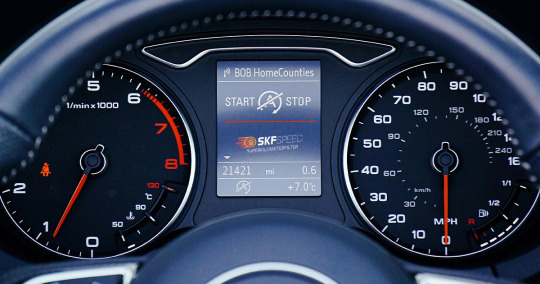
How to Convert Miles to Kilometers (kilometers to miles)
To convert one unit to another, firstly, you should know that a kilometer is 0.62 of a mile, and a mile is 1.609344 kilometers. To convert miles to kilometers, multiply the number of miles by 1.609344 for example, 16 miles=16*1.609344=25.749504. Conversely,if we want to convert kilometers to miles, we should divide the number of kilometers by 1.609344 or multiply the number by 0.6214 (1km=0.6214 miles), for example, 20km=20*0.6214=12,428 miles.
Do not miss the trip meter
Digital odometers also feature a trip meter, which is used for tracking specific trips. It can be reset after every trip by holding a button for a few seconds. This helps record the distance from A to B points during the journey. It serves informational purposes, for instance, when you want to determine how much fuel you need for a particular distance. In short, it helps you determine fuel efficiency.
Let’s return to the total mileage reading and discuss the overall impact and importance of this aspect for individuals and groups.
Why knowing your odometer reading is important
Knowing mileage reading is always crucial for every car owner for several reasons:
It helps to follow the maintenance schedule and plan regular maintenance such as oil changes or tire rotations.
Mileage data greatly influences insurance rates. You need to report mileage data correctly to avoid additional insurance charges, as these companies always check this aspect thoroughly.
Mileage information has an impact on resale value.
The higher the mileage, the higher the chance that it depreciates quickly because there’s a high chance that a high-mileage vehicle will have mechanical issues sooner than a lower-mileage counterpart. However, the topic is not unambiguous. It depends on the other circumstances at the end of the day.
Knowing accurate reading is more impactful than you expect
Obtaining accurate data isn’t only important for individuals, it is also impactful for fleet management, car leasing, environmental impact assessment, used car purchases.
Fleet management: Businesses efficiently use odometer readings to track vehicle usage, schedule maintenance, and manage operating costs. Correct information lets fleet managers plan efficient routes and monitor driver behavior. They use the data in combination with their software, so companies get improved efficiency, vehicles with extended lifespans, cost-effectiveness, and better productivity.
Car leasing: Mileage data is crucial in car leasing agreements. These contracts usually set mileage limits, and exceeding these limits can result in additional charges. In general, awareness of how mileage figures affect lease conditions will help you make informed decisions about whether the particular agreement is worthwhile for you.
Environmental impact assessment: Odometer data can help assess a vehicle’s environmental impact. When you track mileage, you can estimate fuel consumption and carbon emissions. If you care a little about the environment and want to make the world a better place, you can contribute by helping individuals and businesses reduce their carbon footprint. Knowing your vehicle’s mileage can help you make more sustainable decisions.
Used car purchases: Mileage is a significant factor in assessing the general condition of the used automobile. Hence, customers pay close attention to this information, and the correctness of the information is decisive. Unfortunately, inaccurate data is a very widespread problem that harms the used car market.
In the following paragraph, we will discuss reasons behind misleading data, when it is incorrect and what makes it unreliable.
Can odometer reading be misleading?
Yes, odometer readings can be misleading for several reasons: Digital malfunction can cause an incorrect odometer reading. While the digital odometer is an advanced system in modern vehicles, it may sometimes have problems such as software bugs, electrical issues, screen malfunctioning, etc.
Replacements/repairs. Sometimes, it’s necessary to replace the odometer; new odometers are always set to zero unless it is programmed accordingly. The same should be applied to the repaired odometer must be calibrated accurately to ensure it records mileage correctly. It’s not only about what kind of repair or replacement is done, it’s about how it’s done and who does that. For example, is it an authorized service center that manages the process? Is record keeping done properly or not? Those are the potential risks you may come across if you are not mindful enough.
It’s not only about mileage data. If the vehicle has undergone many repairs and issues, it is not estimated as an acceptable variant when choosing an optimized used car to purchase. In this case, mileage figures, even if they are low, can be considered misleading when judging the general condition of the automobile.
Actual danger of odometer fraud. Mileage information can be misleading in the strictest sense if we consider the fact that millions of individuals became the victims of odometer fraud—the practice of resetting or altering an odometer with a fraudulent purpose.

What are the popular tools for tampering with odometer?
Rollback tools are the most popular devices for rolling back odometers. They are capable of altering the data even in digital odometers. However, fortunately, most of these devices have one big fault: they do not alter data in other control units. So, altered information is easily detectable with a help of diagnostic devices.
Altering data doesn’t always mean that the goal is to deceive potential buyers. Sometimes, individuals wish to test their automobile performance without counting additional miles. For that purpose, the German manufacturer offers an innovative device called a Mileage blocker.
Odometer Mileage Blocker
A Mileage blocker is an incredible device that can halt the mileage recording process from all control units. It is outstanding because no one can trace the mileage that was stopped while using the module. Another big advantage is that it doesn’t cause flaws in the Can Bus system, so you enjoy peace of mind when using the device. It is installed behind the speedometer. DIY instructions will ensure that you can install the device on your own.
The manufacturer strictly recommends against using the device on public roads. You should test the automobile and this incredible device only in testing mode in a controlled environment. Unfortunately, many people use the device’s untraceable effect for malicious purposes. We promote using the module for purposes that won’t harm any party and won’t humiliate potential buyers’ rights.
Takeaway
As can be seen, mileage data is of great importance for various reasons. It is very crucial to obtain correct and accurate data to have a good knowledge of the upcoming maintenance of the automobile. Furthermore, it helps to have a close eye on the depreciation of the vehicle and control resale value.
0 notes
Text
OBDSTAR X300M Customer Review
Today, we will be sharing a review from one of our customers regarding the OBDSTAR X300M odometer adjustment tool.
I received my OBDSTAR X300M about a month ago. Thank you for the fast delivery. For those considering purchasing this tool, it is indeed good, very good. I have tried it on three vehicles: it worked with a Skoda Fabia from the year 2007 onwards, supported an Audi A4 from 2009, and functioned exceptionally well on Benz C Class W204.
1. OBDSTAR X300M package display
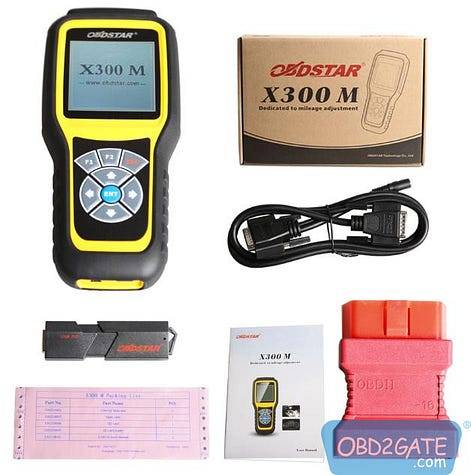
2. Mileage adjustment testing conducted on Benz C Class W204 using OBDSTAR X300M.
Method of Connection: by OBD.
First and foremost, establish a connection between the X300M and the W204 model.
Kindly take note: Prior to adjusting the meter of Benz W204, you are required to plug in the filter.
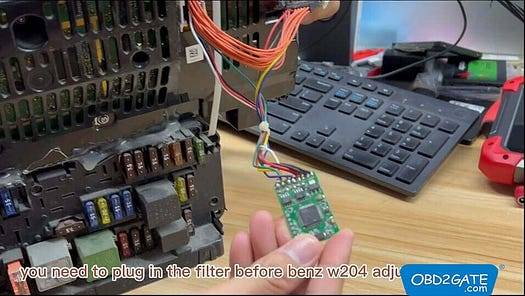
The initial mileage of the vehicle is recorded as 3872 km. At present, we are modifying it to 1314 km.
Input your desired value and proceed to write data using the device.

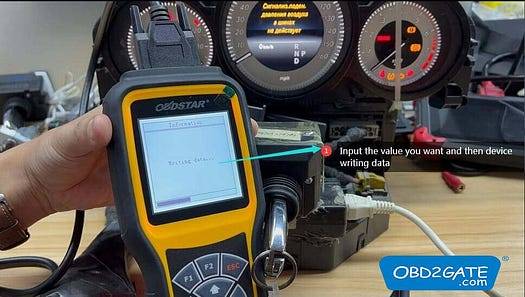
Upon completion of the writing process, the x300M will proceed to modify the mileage.
Adjustment process has been successfully concluded.
The mileage has been accurately adjusted and updated with new data.
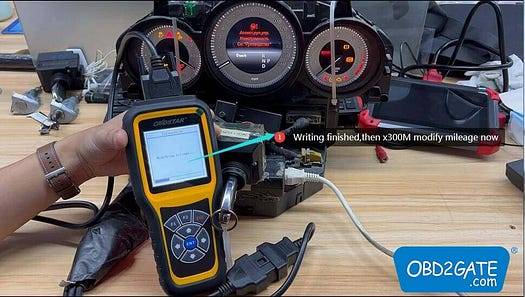
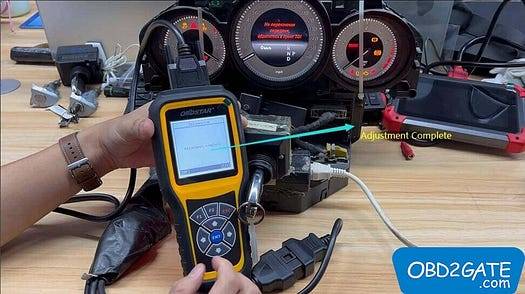
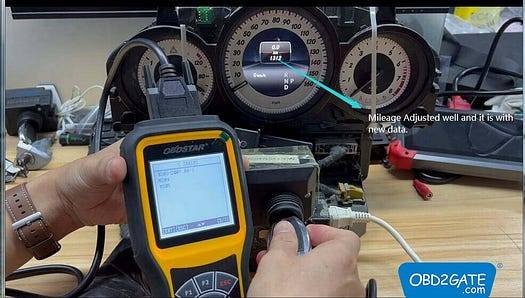
I picked the OBDSTAR X300M for its clear English interface, 1 year free update, and its ability to perform adjustments for all vehicle types via OBD is a practical feature. Moreover, its standard configuration not only includes odometer adjustment but also offers compatibility with OBDII, making it a comprehensive tool for diverse automotive tasks.
Other test reports from other customer feedbacks
For mileage correction:
Hyundai Accent 2011
Ford Focus 2013
Ford Fiesta 2012
Fiat Grand Punto 2010
Fiat Punto 2007
Jeep Grand Cherokee 2013
However, mileage correction was not successful on the following models:
Opel Astra J 2010, 2011, 2012
Other successful mileage corrections include:
Fiat Fiorino via OBD
Audi A4 2007 via OBD
2013 VW Jetta mono display
Chevrolet Cruze 2012: Read security code and mileage correction successful
Mileage correction successful on Chevrolet Cruze 2013
Key Programming Test Reports:
Successful key programming on:
Honda Civic 2006 with all keys lost
Chevrolet Captiva 2012, 2013
0 notes
Text
OBDSTAR X300M Customer Review
Today, we will be sharing a review from one of our customers regarding the OBDSTAR X300M odometer adjustment tool.
I received my OBDSTAR X300M about a month ago. Thank you for the fast delivery. For those considering purchasing this tool, it is indeed good, very good. I have tried it on three vehicles: it worked with a Skoda Fabia from the year 2007 onwards, supported an Audi A4 from 2009, and functioned exceptionally well on Benz C Class W204.
1. OBDSTAR X300M package display

2. Mileage adjustment testing conducted on Benz C Class W204 using OBDSTAR X300M.
Method of Connection: by OBD.
First and foremost, establish a connection between the X300M and the W204 model.
Kindly take note: Prior to adjusting the meter of Benz W204, you are required to plug in the filter.
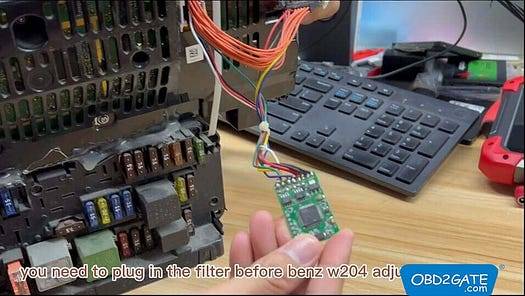
The initial mileage of the vehicle is recorded as 3872 km. At present, we are modifying it to 1314 km.
Input your desired value and proceed to write data using the device.
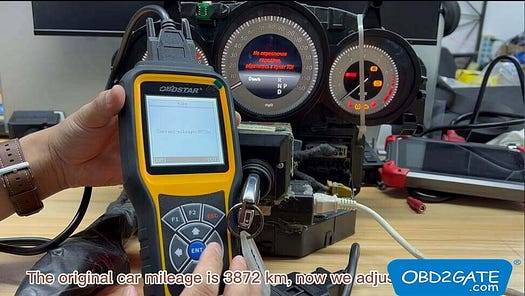
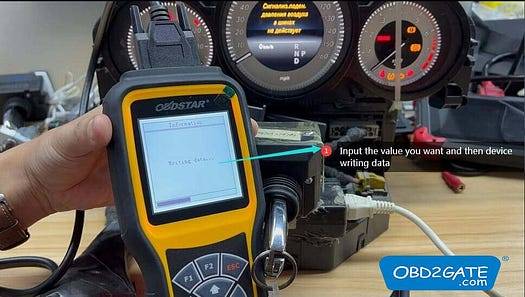
Upon completion of the writing process, the x300M will proceed to modify the mileage.
Adjustment process has been successfully concluded.
The mileage has been accurately adjusted and updated with new data.
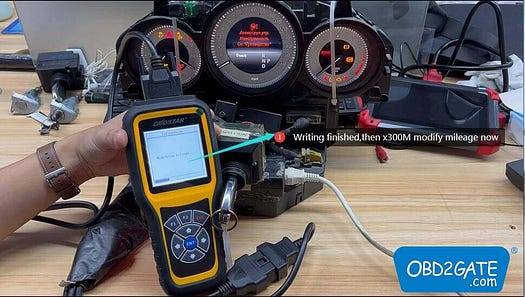
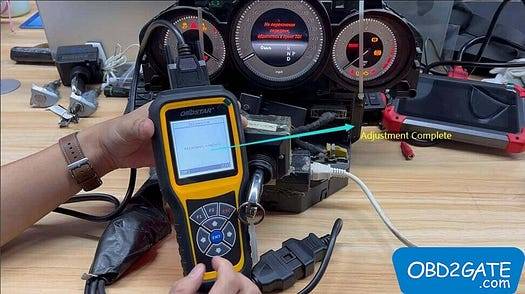

I picked the OBDSTAR X300M for its clear English interface, 1 year free update, and its ability to perform adjustments for all vehicle types via OBD is a practical feature. Moreover, its standard configuration not only includes odometer adjustment but also offers compatibility with OBDII, making it a comprehensive tool for diverse automotive tasks.
Other test reports from other customer feedbacks
For mileage correction:
Hyundai Accent 2011
Ford Focus 2013
Ford Fiesta 2012
Fiat Grand Punto 2010
Fiat Punto 2007
Jeep Grand Cherokee 2013
However, mileage correction was not successful on the following models:
Opel Astra J 2010, 2011, 2012
Other successful mileage corrections include:
Fiat Fiorino via OBD
Audi A4 2007 via OBD
2013 VW Jetta mono display
Chevrolet Cruze 2012: Read security code and mileage correction successful
Mileage correction successful on Chevrolet Cruze 2013
Key Programming Test Reports:
Successful key programming on:
Honda Civic 2006 with all keys lost
Chevrolet Captiva 2012, 2013
0 notes
Text
A Motorized Bicycle Parts Explained - Anatomy Of A Motor For A Bicycle
The components of a motorbike work together to create a bicycle capable of providing efficient transportation over short to medium distances. This article's goal is to educate readers who are unfamiliar with a motorized bicycle about each component's function. Motor for a bicycle is a two-wheeled vehicle equipped with an engine that provides propulsion. Let's explore its anatomy in more detail.
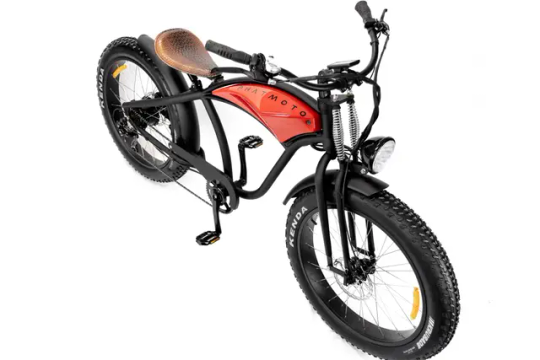
Frame: The frame forms the backbone of the motor for bicycle, providing structural support and housing for other components. It is typically made of steel or aluminum and is designed to withstand the forces and vibrations generated during operation.
Engine: The engine is the heart of the motor bike, generating power to propel the vehicle. It can be either a two-stroke or four-stroke internal combustion engine. Two-stroke engines are simpler and lighter but require a mixture of fuel and oil. Four-stroke engines are more complex but offer better fuel efficiency and lower emissions.
Fuel Tank: The fuel tank stores the gasoline or fuel mixture required to power the engine. It is usually located in the front or center of the frame, and its capacity can vary depending on the design of the motorized bicycle.
Carburetor: The carburetor is responsible for mixing the fuel and air in the correct ratio before it enters the engine for combustion. It regulates the fuel flow based on the throttle position, ensuring optimal engine performance.
Exhaust System: The exhaust system consists of a series of pipes and a muffler that expels the burnt gases produced during the combustion process. It helps reduce engine noise and directs the exhaust gases away from the rider.
Transmission: Motor for a bicycle typically uses a chain or belt drive system to transmit power from the engine to the rear wheel. The transmission may include a gearbox with multiple gears to provide different speed options.
Clutch: The clutch allows for smooth engagement and disengagement of power between the engine and the transmission. When the clutch lever is pulled, it disengages the engine from the transmission, enabling the rider to change gears or come to a stop without stalling the engine.
Throttle: The throttle is a control mechanism that regulates the engine speed and power output. By twisting the throttle grip, the rider can increase or decrease the amount of fuel and air entering the engine, thus controlling the vehicle's acceleration.
Brakes: These are equipped with brakes to slow down or stop the vehicle. The most common types of brakes used are drum brakes or disc brakes. Drum brakes consist of a brake shoe that presses against the inside of a drum attached to the wheel, while disc brakes use a caliper and brake pads to clamp down on a disc attached to the wheel.
Wheels and Tires: Motorized bicycles typically have two wheels, each equipped with a tire for traction and shock absorption. The wheels can be made of steel or aluminum, and the tires vary depending on the intended use of the motor for a bicycle, with options for on-road or off-road riding.
Suspension: Suspension systems are used to absorb shocks and provide a more comfortable ride. These often feature suspension forks in the front and either spring-based or hydraulic shocks in the rear. These components help to smooth out bumps and uneven terrain.
Lighting: To ensure visibility and safety, motor bikes are equipped with lighting systems. This includes headlights, taillights, and turn signals. These lights can be powered by the electrical system of the motorized bicycle or, in some cases, by a small battery.
Controls and Instruments: These have various controls and instruments to provide essential information to the rider. This includes handlebar-mounted controls for the throttle, clutch, brakes, and lights. Instruments such as a speedometer, odometer, and fuel gauge may also be present to keep the rider informed about the vehicle's performance and status.
Display: These days, almost all bike kits and complete bikes come with a rather complex display computer that serves as a dashboard for monitoring operations. From the early days of e-bikes, when the majority of systems only had a few LEDs to display the battery level, this is a wonderful improvement.
Kickstand: A kickstand is a small mechanism attached to the frame that allows the motor for a bicycle to be parked and supported in an upright position when not in use. It provides convenience and stability when the rider needs to park the vehicle.
These are the primary components that make up the anatomy of a motorized bicycle. By combining these elements, motor for bicycle provide an efficient and convenient mode of transportation for short to medium distances, offering riders the benefits of both a bicycle and a motorized vehicle.
2 notes
·
View notes
Text
How to Buy a New Car: A Complete Step-by-Step Guide
Buying a new car is one of the biggest financial decisions you'll make, and it’s important to get it right. Whether you’re upgrading, buying your first car, or simply exploring your options, knowing the process can save you time, money, and stress. This guide will walk you through how to buy a new car smartly and confidently.
1. Determine Your Budget
Before you walk into a dealership or start browsing online, set a realistic budget. Consider:
Down payment: Usually 10–20% of the car’s value.
Monthly EMIs (if taking a loan): Ensure they don’t exceed 15% of your monthly income.
Insurance and maintenance: Add these to your overall cost calculation.
💡 Tip: Use online car loan calculators to estimate EMI and total loan costs.
2. Define Your Needs
Not all cars are made for everyone. Think about how you will use the vehicle:
City or Highway driving?
Fuel efficiency or performance?
Sedan, SUV, or hatchback?
Petrol, diesel, CNG, or electric?
Make a list of features you need: automatic transmission, infotainment system, safety ratings, boot space, etc.
3. Research Cars That Match Your Criteria
Once you know what you need, start shortlisting cars. Use car comparison websites or apps to evaluate:
Price
Mileage
Safety features
Reviews by experts and users
Warranty and after-sales service
Popular platforms in India include CarDekho, Cars24, Spinny, and ZigWheels.
4. Visit Dealerships and Take Test Drives
Never buy a car without a test drive. During the test drive, check:
Driving comfort
Visibility
Acceleration and braking
Cabin noise
Space and comfort (for both driver and passengers)
Visit multiple dealerships for the same model to compare offers and availability.
5. Check for Offers and Discounts
Automobile brands and dealers often provide:
Seasonal offers
Exchange bonuses
Corporate discounts
Free insurance or accessories
Always negotiate. Even if it’s a new car, dealers may offer cash discounts or free upgrades.
6. Consider Financing Options
If you're not buying the car outright, explore these financing choices:
Bank Loans: Often lower interest rates than NBFCs.
NBFCs: Faster processing, even with lower credit scores.
Dealer Finance: Convenient but can be slightly expensive.
Compare interest rates, loan tenure, processing fees, and prepayment charges before choosing.
7. Evaluate Insurance Plans
New cars must be insured before driving. The dealer may offer insurance, but don’t hesitate to get quotes from:
Third-party insurers
Online aggregators (like PolicyBazaar or Coverfox)
Choose comprehensive insurance for better protection.
8. Review the Final Quotation and Paperwork
Before finalizing the deal, ensure the quotation includes:
Ex-showroom price
Road tax
Registration charges
Insurance cost
Handling and logistics fees
Extended warranty (if any)
Accessories
Check all documents thoroughly before signing:
Invoice
RC book
Insurance papers
Loan agreement
Warranty booklet
Owner’s manual
9. Inspect the Car Before Delivery
Before taking delivery, do a pre-delivery inspection (PDI):
Check for scratches, dents, or paint issues.
Confirm odometer reading (should be under 50–100 km).
Ensure all promised accessories are fitted.
Verify that the vehicle is the correct variant and color.
Only sign the delivery documents after full satisfaction.
10. Post-Delivery Checklist
After delivery:
Register the car with the local RTO (if the dealer hasn’t).
Get number plates fixed.
Install Fastag if not already provided.
Set up your car infotainment system and connect mobile apps.
Keep a digital and physical copy of all documents.
Final Thoughts
Buying a new car is exciting but requires research and caution. Following this guide will help you:
✅ Avoid overspending ✅ Get the right car for your needs ✅ Ensure a smooth buying and delivery process
Take your time, compare offers, and don’t rush. A new car should bring you joy for years—not headaches.
FAQs – Buying a New Car
Q. What is the best time to buy a new car? A. The year-end (October to December) and festive seasons (like Diwali) are great times due to heavy discounts.
Q. Is it better to buy from a showroom or online? A. Showrooms offer physical experience and test drives, while online platforms may offer better deals. A hybrid approach works best.
Q. Should I buy an extended warranty? A. Yes, especially if you plan to keep the car beyond the standard 3–5 years
1 note
·
View note